Honoring Nurses in 1946
Nurses have been critically important to Johnson & Johnson for more than a century, both as partners in improving health care and as employees. Due to this close relationship, the company has both helped and honored nurses for generations, a tradition that continues today with the Campaign for Nursing’s Future.
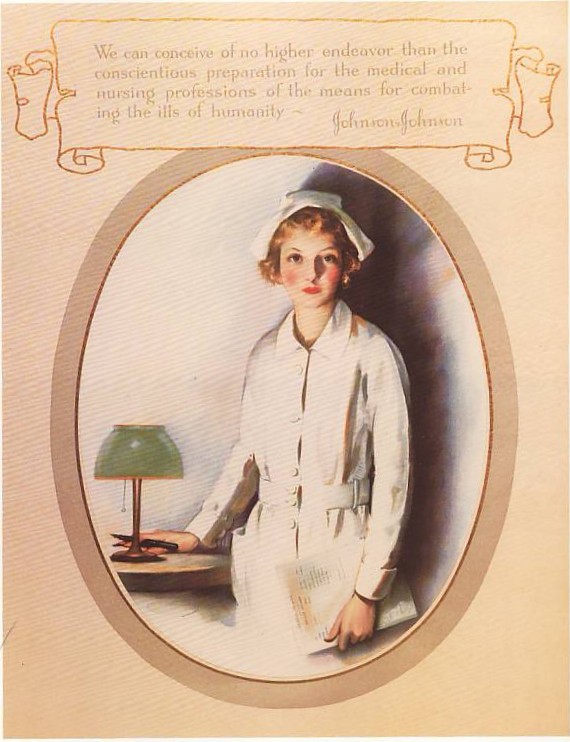
In recognition of this special relationship, during the 1940s, the company decided to honor nurses by commissioning a portrait of the founder of modern nursing: Florence Nightingale. And in charge of that effort was none other than Earle Dickson, the inventor of the BAND-AID® Brand Adhesive Bandage, who had risen to be vice president of the company’s Hospital Division.
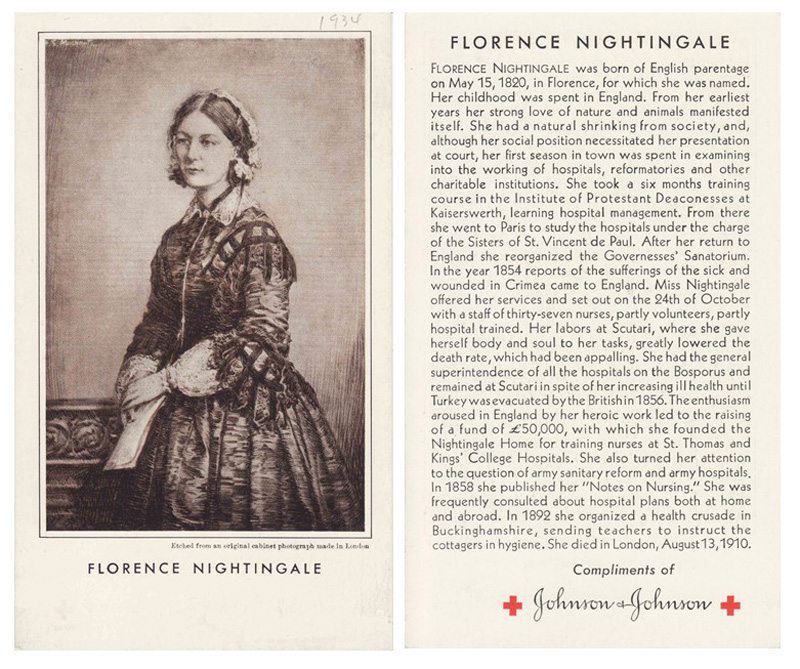
Johnson & Johnson had already honored Florence Nightingale in 1934 with small postcard with her photograph on the front, and a short biography on the back. The company had been producing calendars for hospital nurses, and in 1946 a letter was written to the Association of Women in Public Health, to gauge interest in a calendar featuring Florence Nightingale. Assured of tremendous interest, Johnson & Johnson began its research, going as far as reaching out to the United Kingdom to find out which images Ms. Nightingale’s family thought were the best likenesses to use to create a portrait.
“This calendar, sixth in the series issued by Johnson & Johnson, is the result of years of careful research. The idea was conceived in 1940 when we began plans for the 1941-1942 calendar bearing the pictures of twelve famous nurses. Florence Nightingale was included in that series. It was then that we decided to devote an entire calendar to her.” [Letter from Johnson & Johnson Hospital Division, January 2, 1947, Johnson & Johnson Archives.]
After an extensive search, an artist was selected, and the process of creating the painting began.
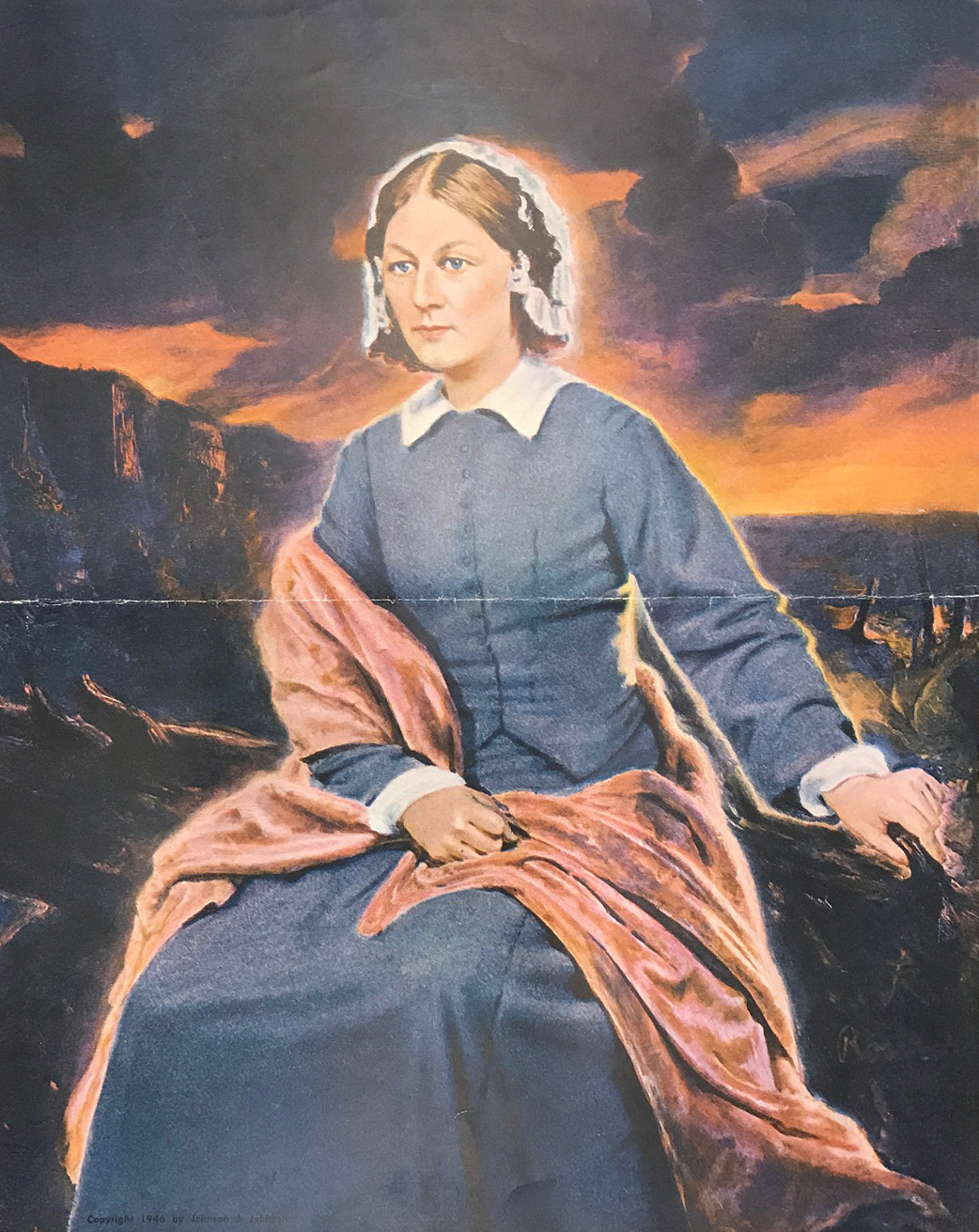
.
The portrait depicted Florence Nightingale against a backdrop of the Crimean War, the 1853-1856 conflict in which she and her team of volunteer nurses revolutionized sanitary conditions in military hospitals and saved many lives. Johnson & Johnson consulted nurses every step of the way through the project, and showed the finished portrait to the staff of Columbia University’s Division of Nursing Education, incorporating their feedback into final changes to the portrait to ensure that it was as accurate as possible and that it reflected the profession of nursing.
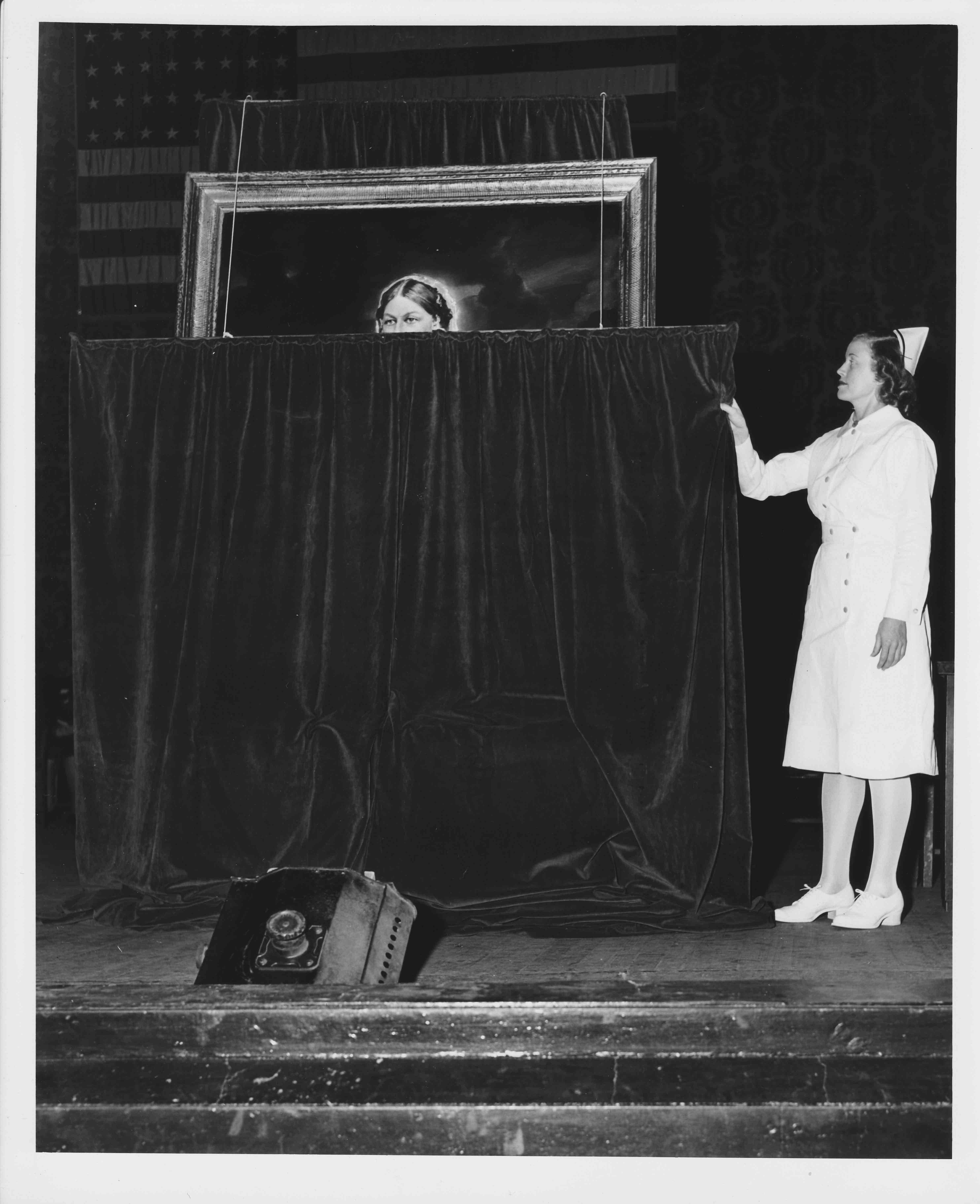
The painting was unveiled on September 26, 1946 at the American Nurses’ Association Biennial Nursing Convention in Atlantic City, New Jersey, by a young nurse who had been chosen as “The Typical American Nurse of 1946,” representing the spirit of determination of the profession. As she pulled the rope to unveil the painting, the nurses in the audience spontaneously stood to give Florence Nightingale a standing ovation. One of the nurses who spoke at the event conveyed the pride in nursing represented by the new work of art.
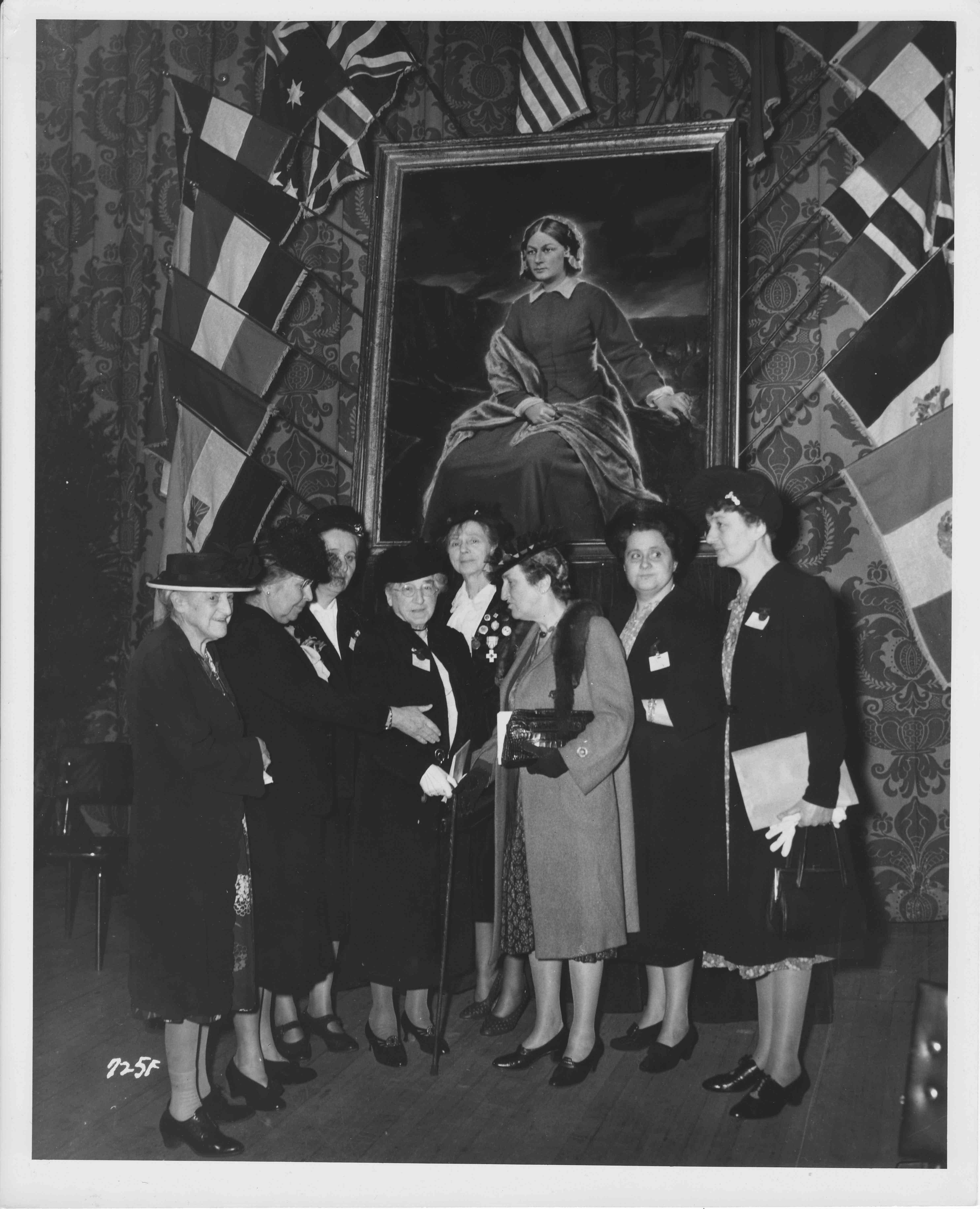
“Against the background of war, a beautifully dynamic portrait conveys a dramatic sense of eagerness for the experiences that lie ahead. The donors, …Johnson & Johnson…have invited me to present the portrait to the profession in honor of the achievement of American nurses. I do so with a profound sense of pride in our profession which constantly adapts it service by holding fast to an unswerving purpose.” [Remarks by Mary R--- at the unveiling of the portrait of Florence Nightingale, 1946 Biennial Nursing Convention, September 26, 1946, from the Johnson & Johnson Archives.]
The portrait painting was used in the company’s 1947-1948 two-year calendar, which was distributed to hospitals and nurses’ training schools. Additionally, color reprints of the painting were made available for any nurse wanting one, and requests came not only from across the United States, but from the Royal College of Nursing in the U.K. and from across Canada.
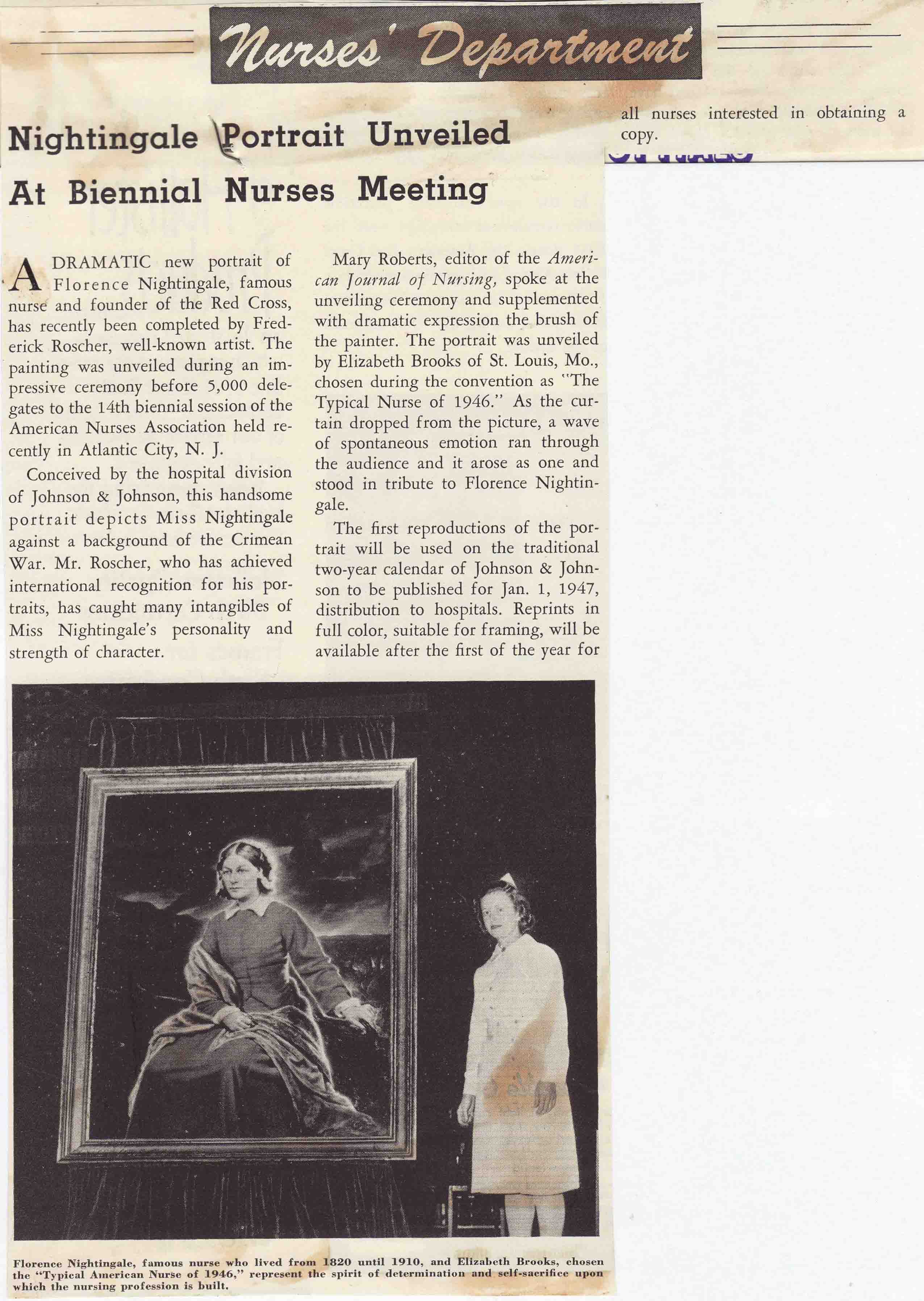
Today, seven decades later, Johnson & Johnson continues its heritage of support for nursing, a profession whose mission of caring for others mirrors the company’s mission of caring for the world, one person at a time. Just as the earliest roots of Johnson & Johnson grew out of the battlefields of the Civil War and the drive by Robert Wood Johnson and his brothers to make surgery sterile, the roots of the nursing profession grew from Florence Nightingale and her volunteer nurses saving the lives of the wounded during the Crimean War. Those parallel beginnings in caring for others remain at the heart of the legacy of partnership between Johnson & Johnson and nurses – a closeness recognized by the company and by generations of nurses. In honoring Florence Nightingale – and all nurses – with the portrait painting in 1946, Johnson & Johnson acknowledged those shared roots, as well as a commitment to the future.
